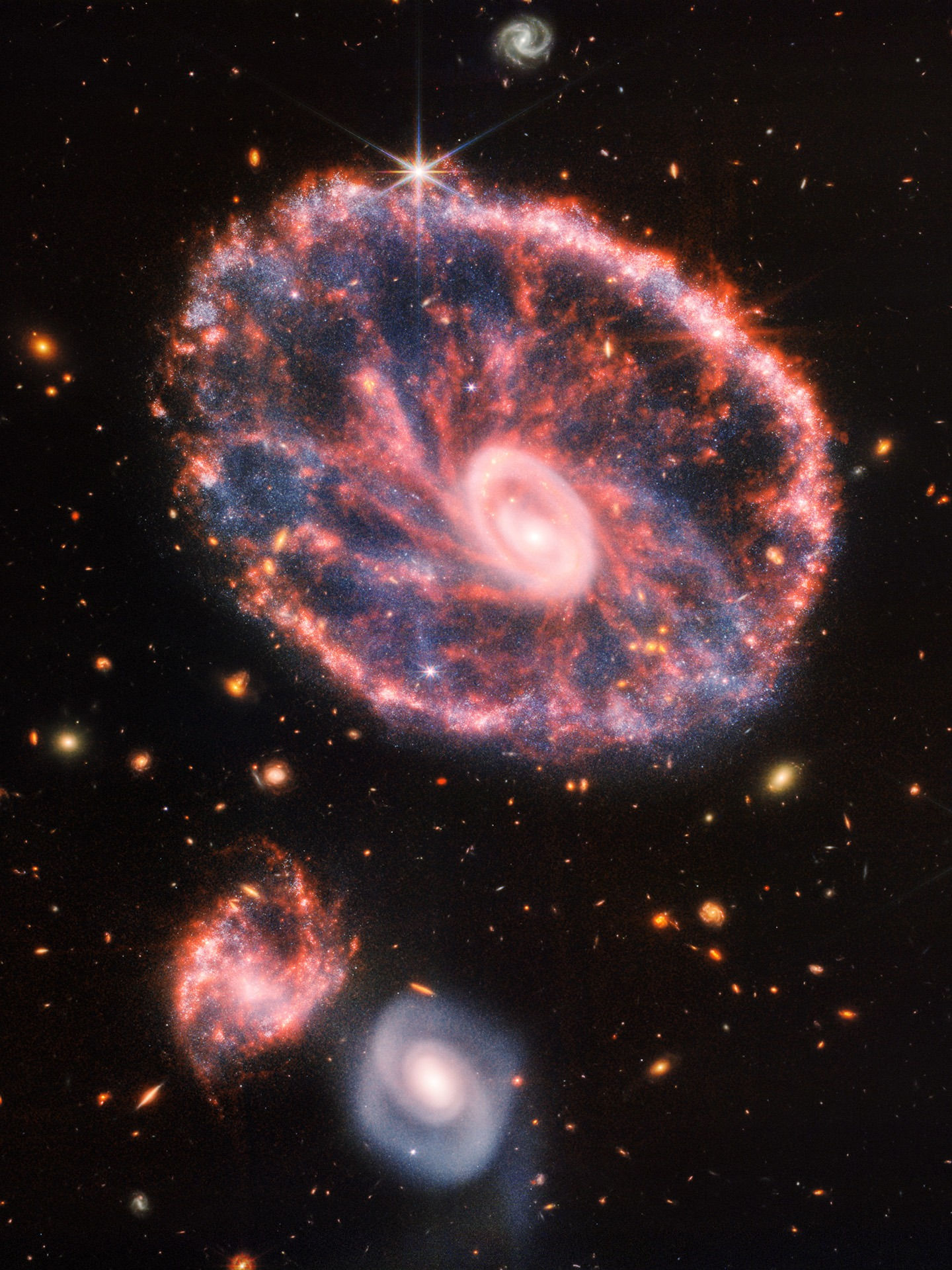Astronomy for Dummies: The Ultimate Guide to the Night Sky.
- Phystroid
- Aug 25, 2019
- 5 min read
Updated: Mar 30, 2023
Read this article to learn the secrets of the night sky. One of the most significant stars of the night sky is the "Polaris" or "Alpha Ursa Minoris". The brightest star of a constellation is denoted with the Greek letter "Alpha" or "α". The second brightest star of a constellation is assigned the second letter of the Greek alphabet "beta" or "β", and so on for the rest of the stars. Polaris is also called the "North Star", because the north pole of the celestial sphere is very close to the Polaris. Furthermore, due to a movement of the Earth's axis (which most people probably don't know), the position of the north celestial pole is changing with respect to the stars. This movement is called precession, and it takes about 25,800 years for the Earth's axis to return on the same position with respect to the stars.

In the picture above you can see the constellation of Ursa Minor (right), Draco (center), as well as part of the constellation of Cepheus (on the top). The green circle shows the points on the sky that will become north poles of the celestial sphere. At the moment the north celestial pole is less than a degree away from Polaris, it approaches the star and they will reach their minimum distance in 2102. In the past α Draconis was the polar star. The Pyramids have been built in a such a way, that the light from α Draconis, could enter a small hole inside the Pyramid pointing in room where there are the remains of Pharaohs. You may read more about this here. The celestial sphere can be thought of as a concentric sphere with Earth, but with a larger radius.
The axis of rotation of Earth meets the celestial sphere at two points: the North Celestial Pole, and the South Celestial Pole. As the Earth rotates around its axis once every 24 hours, it appears to us that Earth is not moving and the celestial sphere is rotating around the North Celestial Pole, which happens by coincidence to be very close to the Polaris. Although the relative distance of all stars in the night sky remains constant (this is also not true for time periods of millions of years as stars move within a galaxy), the celestial sphere on which they are attached is rotating once every 23 hours and 56 minutes approximately. Although Earth rotates around its axis once every 24 hours, the celestial sphere needs about 4 minutes less for a full rotation. This 4 minutes difference is due to the motion of the Earth around the Sun. The practical meaning of this difference is that the night sky observers will see every night the stars to rise and set with a delay of about 4 minutes.

Below you can see the Big Dipper on the bottom of the picture. A line from the stars Merak and Dubhe leads us to the Polaris.

Depending on the observing conditions some of the stars of Ursa Minor, might not be visible. However you should be able to find Polaris which is quite brighter, as well as you will be able to see the prominent shape of the Big Dipper. The star on the top of the green line above is Polaris. The height of Polaris from the horizon is always equal to the geographic latitude of the observer. This means that on the equator of Earth, Polaris will appear on the horizon. For an observer on the north pole, Polaris will be on the zenith of the observer. For negative geographical latitudes Polaris will not be visible, instead observers will see the celestial sphere rotating around the south celestial pole (which is harder to spot as there are no bright stars nearby). This fact is very important because it allowed ancient observers to understand the spherical shape of Earth: only if Earth was spherical, one could explain the difference in height from the horizon of various stars as they are observed from different places on Earth. Using this argument for two different heights of the Sun from the horizon at two different places on Earth (with different latitude), Eratosthenes was able to get an estimate for the circumference of Earth, with a very famous experiment.

Above you can see an illustration of this very special movement of Earth. Vega is a very bright star in the constellation of Lyra. It forms part of the "Summer Triangle". The two other bright stars of the triangle are Deneb and Altair. The triangle has a prominent position on the night sky of the summer, and is easily recognizable.

Vega is also known as α Lyrae and is about 25 light years away from Earth. One light year is the distance that light travels in a year and is equal to about 10 trillion km. In the year 3000 B.C., the North Star was Thuban (or Alpha Draconis), in about 13,000 years from today, Vega will become the new North Star. Deneb will be get close to the north celestial pole (at a distance of 7° from the north celestial pole), in 9800 years from today. Deneb is the brightest star in the constellation of Cygnus. Next, let us have a look at the zodiac constellations: The 12 Zodiac constellations lie on the ecliptic.

As the Earth revolves around the Sun, it appears that the Sun passes through all the zodiac constellations in 365.25 days. Each constellation has a width of 12 degrees [all of them together combining to give a total width of 360 degrees (a full circle)]. Every day the Sun is moving through the constellations with a speed of about a degree per 24 hours. Moon is also moving with respect to the constellations: about 12 degrees every 24 hours. Of course Moon is not moving exactly on plane of the ecliptic, for this reason we don't observe solar eclipses every month. This is due to the inclination of the Moon's orbit, with respect to the ecliptic.

Planets, as they revolve around the Sun also move on the celestial sphere, with slower speeds depending on their rotational period. Mercury and Venus are always observed near the Sun on the Sky, because they are very near the Sun. The orbital period of planets increases in duration, the more distant they are from the Sun. Mercury needs only 88 days for a full orbit around the Sun. We can also observe the phases of Venus, as it reflects the solar light from different angles. The Planets, our Sun and the Moon are moving towards east on the sky, despite the fact that the celestial sphere is moving towards west. Planets have different inclinations about the ecliptic, with Mercury deviating the most (7 degrees) and Uranus deviating the least (0.77 degrees). Stay tuned for our next article on this interesting topic.






























































































Comments